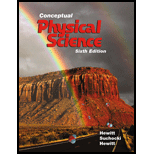
Search the sky for passing jets anti look for the condensation trail—contrail—that the Jet leaves behind. Because jet exhaust is mainly carbon dioxide and water vapor, when the water vapor mixes with the cold environment of the upper troposphere, it can condense into small water droplets to form a line of white “clouds”.
Study the length and thickness of the contrails. You may even take a photo. After about 10 minutes, reexamine the contrails. Are they still there? Have they dissipated, or have they grown thicker? If they have disappeared, or if the jet did not leave a contrail, the humidity of the atmosphere is too low to create clouds and produce rain. So it is safe to say that tomorrow's weather will probably be very similar to today’s weather. If the contrails are still present and have grown thicker, the humidity of the atmosphere is high enough for cloud formation. And with clouds can come precipitation. So tomorrow's weather may be very different from today's.
Want to see the full answer?
Check out a sample textbook solution
Chapter 25 Solutions
Conceptual Physical Science Plus Mastering Physics with Pearson eText -- Access Card Package (6th Edition)
Additional Science Textbook Solutions
Genetic Analysis: An Integrated Approach (3rd Edition)
Cosmic Perspective Fundamentals
Applications and Investigations in Earth Science (9th Edition)
Chemistry: An Introduction to General, Organic, and Biological Chemistry (13th Edition)
Introductory Chemistry (6th Edition)
Microbiology: An Introduction
- At point A, 3.20 m from a small source of sound that is emitting uniformly in all directions, the intensity level is 58.0 dB. What is the intensity of the sound at A? How far from the source must you go so that the intensity is one-fourth of what it was at A? How far must you go so that the sound level is one-fourth of what it was at A?arrow_forwardMake a plot of the acceleration of a ball that is thrown upward at 20 m/s subject to gravitation alone (no drag). Assume upward is the +y direction (and downward negative y).arrow_forwardLab Assignment #3 Vectors 2. Determine the magnitude and sense of the forces in cables A and B. 30° 30° 300KN 3. Determine the forces in members A and B of the following structure. 30° B 200kN Name: TA: 4. Determine the resultant of the three coplanar forces using vectors. F₁ =500N, F₂-800N, F, 900N, 0,-30°, 62-50° 30° 50° F₁ = 500N = 900N F₂ = 800Narrow_forward
- Lab Assignment #3 Vectors Name: TA: 1. With the equipment provided in the lab, determine the magnitude of vector A so the system is in static equilibrium. Perform the experiment as per the figure below and compare the calculated values with the numbers from the spring scale that corresponds to vector A. A Case 1: Vector B 40g Vector C 20g 0 = 30° Vector A = ? Case 2: Vector B 50g Vector C = 40g 0 = 53° Vector A ? Case 3: Vector B 50g Vector C 30g 0 = 37° Vector A = ?arrow_forwardThree point-like charges are placed at the corners of an equilateral triangle as shown in the figure. Each side of the triangle has a length of 20.0 cm, and the point (A) is located half way between q1 and q2 along the side. Find the magnitude of the electric field at point (A). Let q1=-1.30 µC, q2=-4.20µC, and q3= +4.30 µC. __________________ N/Carrow_forwardNo chatgpt pls will upvotearrow_forward
- Find the total capacitance in micro farads of the combination of capacitors shown in the figure below. HF 5.0 µF 3.5 µF №8.0 μLE 1.5 µF Ι 0.75 μF 15 μFarrow_forwardthe answer is not 0.39 or 0.386arrow_forwardFind the total capacitance in micro farads of the combination of capacitors shown in the figure below. 2.01 0.30 µF 2.5 µF 10 μF × HFarrow_forward
 An Introduction to Physical SciencePhysicsISBN:9781305079137Author:James Shipman, Jerry D. Wilson, Charles A. Higgins, Omar TorresPublisher:Cengage Learning
An Introduction to Physical SciencePhysicsISBN:9781305079137Author:James Shipman, Jerry D. Wilson, Charles A. Higgins, Omar TorresPublisher:Cengage Learning Physics for Scientists and Engineers: Foundations...PhysicsISBN:9781133939146Author:Katz, Debora M.Publisher:Cengage Learning
Physics for Scientists and Engineers: Foundations...PhysicsISBN:9781133939146Author:Katz, Debora M.Publisher:Cengage Learning
 College PhysicsPhysicsISBN:9781938168000Author:Paul Peter Urone, Roger HinrichsPublisher:OpenStax College
College PhysicsPhysicsISBN:9781938168000Author:Paul Peter Urone, Roger HinrichsPublisher:OpenStax College
 College PhysicsPhysicsISBN:9781285737027Author:Raymond A. Serway, Chris VuillePublisher:Cengage Learning
College PhysicsPhysicsISBN:9781285737027Author:Raymond A. Serway, Chris VuillePublisher:Cengage Learning





